
This is the first part of an article devoted to my visit to the spring CMEF & ICMD medical equipment and accessories exhibition in Shanghai, in 2018. It will contain a general description of the exhibition, visiting nuances, tips, etc.
general description
CMEF & ICMD is, strictly speaking, not one, but two exhibitions combined in space and time. The CMEF (China International Medical Equipment Fair) is dedicated to medical equipment and the ICMD (International Component Manufacturing & Design Show) to the various components of which this equipment consists. Thus, these exhibitions collect under their roof both end consumers and manufacturers. Exhibitions are intertwined with each other, so there is no strict boundary between them and it makes sense to speak about them in conjunction, so in the future I will write about the exhibition in the singular.
CMEF & ICMD is the largest trade show in Asia and the Pacific. Held twice a year for 4 days - spring in Shanghai and autumn in Shenzhen. Since I visited the Shanghai exhibition, then everything described will be related to it. I admit that in some aspects the spring and autumn exhibitions may have differences.
CMEF takes its beginning in 1979 and the exhibition in Shanghai this year was already the 79th. ICMD appeared much later and this spring was held for the 26th time. Despite the fact that the exhibition is an international absolute majority of Chinese companies. Foreign companies or Chinese representative offices of foreign companies account for about 1/8 of all participants. Speaking directly about the products presented, most of them are also supplied to the Chinese domestic market. However, since modern China is export-oriented, almost all types of products can also go to foreign markets.
Presented products
If we talk about the range, it is the most diverse - from shoe covers to scanners, with full filling of all the niches between them. And for virtually any type of product there are dozens (and sometimes hundreds) of various manufacturers. Huge competition. Part of the production is shown live (usually there is at least one copy of each type). Why isn't everything being demonstrated? If we are talking about small components or consumables (for example, test tubes), in most cases the nomenclature series contains hundreds of positions slightly different from each other, therefore, to evaluate the quality and properties, several of the most common types are sufficient. At the other extreme, this is large equipment like tomographs or hospital beds. They occupy a large area and for the demonstration of the entire range would require large spaces, the rent of which costs money. In any case, most companies have complete product catalogs. It is also worth noting that in some cases the work of the equipment itself is demonstrated, for example, the process of packing patches in packs. There is something to see, but to see everything is practically unreal.
 At the exhibition you can find almost any product related to medicine.
At the exhibition you can find almost any product related to medicine.Location
The exhibition is held at the Shanghai National Exhibition Center (
Shanghai National Convention & Exhibition Center - NECC ). In general, in Shanghai, as in a large financial center, quite a lot of various industry exhibitions are held, as a result of which the city has a number of large venues for them. However, NECC is the largest exhibition venue in Shanghai. Moreover, for 2017, he ranked
second in the world among all centers in the exhibition space .
 Shanghai National Exhibition Center (render) - photo from www.neccsh.com
Shanghai National Exhibition Center (render) - photo from www.neccsh.comThe exhibition center is really huge. The total area of all premises is 1.47 million square meters. m. The exhibition area is 400,000 square meters. m, of which ¾ covered. For comparison, the size of the Red Square is 24,750 square meters. m., and the area of all premises "Zenith Arena" 287,600 square meters. m. The top of the building resembles a four-leaf clover. In each “petal” there are 2 exhibition segments, having the shape of an elongated rectangle with a bevel at one of the corners. Thus, a total of 8 indoor exhibition segments are obtained. The segments are multi-storey, but the main areas are concentrated on the first floors. They all converge to the so-called "central ring". It is a closed corridor, on both sides of which there are various cafes, restaurants, shops, banks, etc. In the center of the building there is a large round square resembling the bottom of a well. In various parts of the building are located the entrance to the subway and the platform for the entrance of a taxi. In addition to the covered segments in the petals, there is a large open area in the northern part of the building (at the CMEF exhibition, ambulances were displayed on it).
 Layout of exhibition areas - photo from cmef.com.cn
Layout of exhibition areas - photo from cmef.com.cnSegments and stands
Each segment contains a huge number of stands. The stand, in addition to the company name, contains a unique identifier with information about its location at the exhibition. The fact is that the segments are marked with rows and columns to which stands are attached. The identifier has the following form: segment number + row letter + column number (for example, stand 3F09 is in the ninth column of row F of the third segment). Since the numbering of rows and columns goes sequentially from the beginning of the segment, then any stand is fairly easy to find by its identifier. A general list of exhibitors with identifiers is available in advance on the website, and is also available at the main entrance.
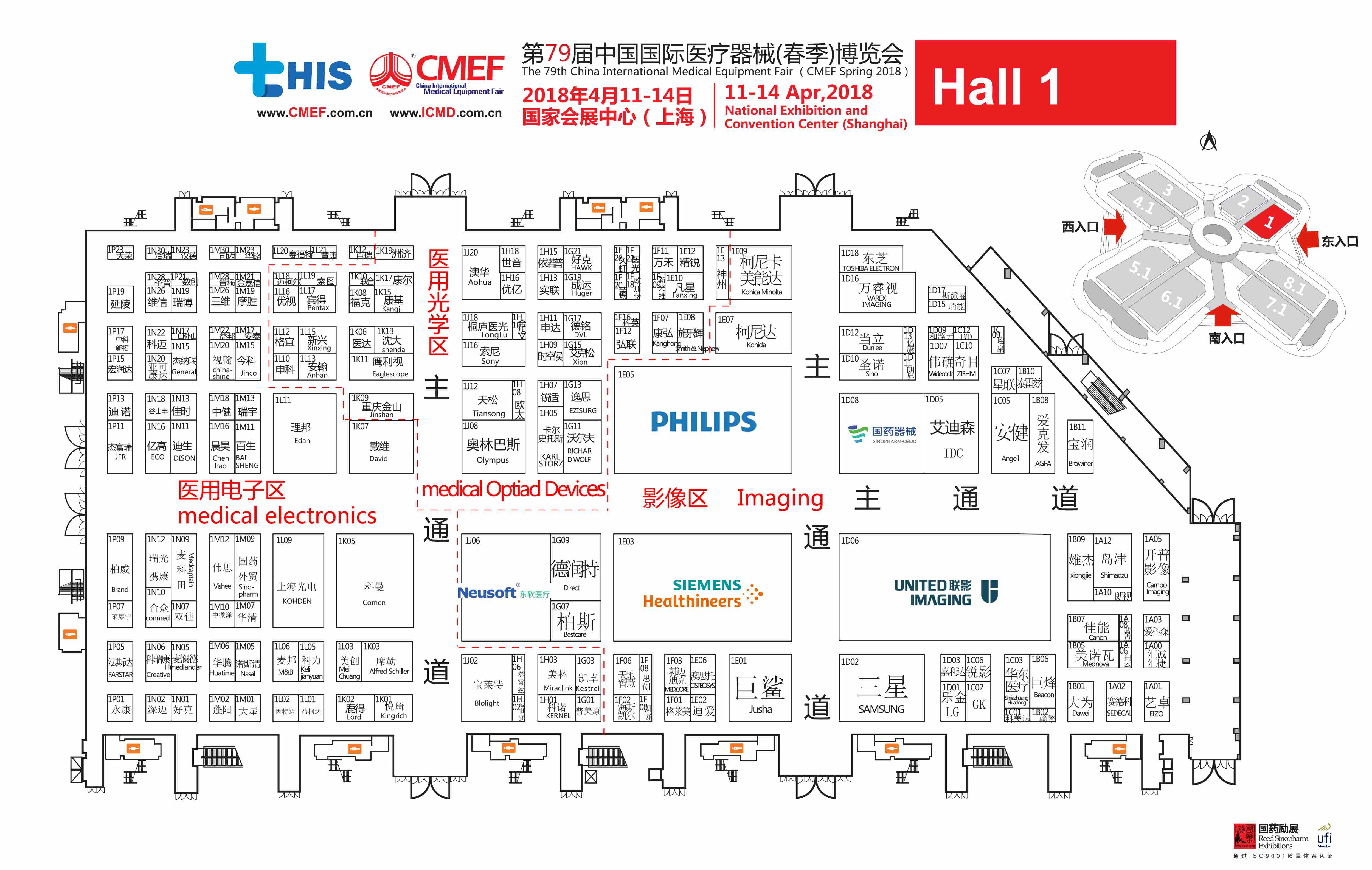 Layout of stands in the first segment - photo from cmef.com.cn
Layout of stands in the first segment - photo from cmef.com.cnIn addition, each segment is divided into several thematic zones, for example, segment 3 contains zones of disposable instruments, orthopedic products and in-vitro diagnostic devices. Thus, stands are grouped according to their main subject. At the same time, a company producing various types of products can have 2 stands in different zones or segments, however, in most cases there is only one stand in the zone corresponding to the main product of the company.
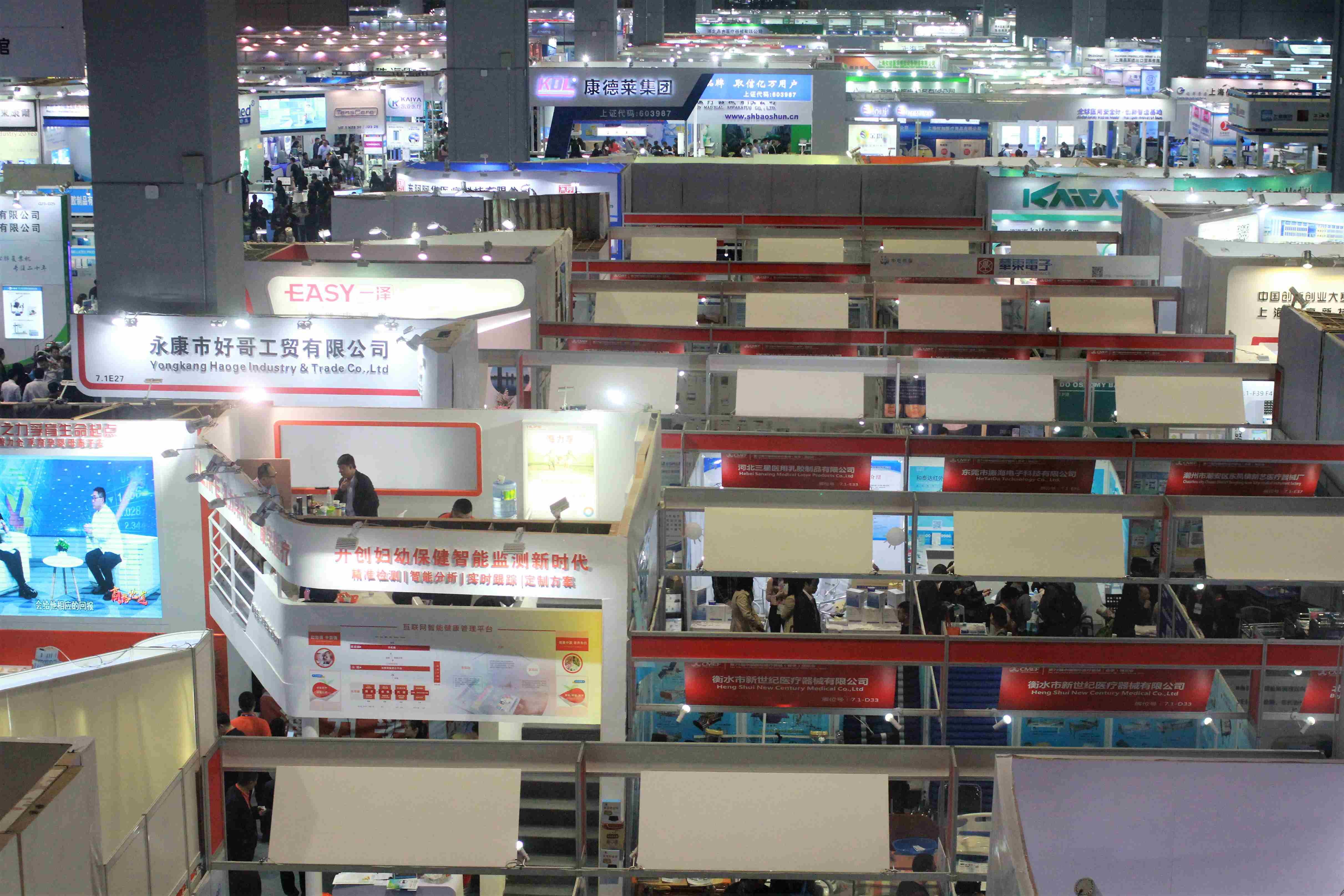 Panorama of one of the segments. In the center of the photo are several stands without individual design.
Panorama of one of the segments. In the center of the photo are several stands without individual design.Stand sizes may vary by orders of magnitude. The minimum sampling is about 2x2 meters. Further expansion goes through such minimal blocks. The largest stands measure several hundred square meters. In most cases, there was a direct linear relationship between the size of the company's products and the size of the stand (not without exception, of course). If the stand consists of several discretes, then the identifiers of the “absorbed” stands are not used in order not to disturb the even grid of rows and columns.
The appearance of the stands can be of two types - standard and individual. A typical stand contains rear and side walls of office partitions and has a sign with the company name and identifier on an orange background. If desired, the company can make individual or all elements individual, for example, instead of a nameplate, hang an image with your logo, or replace standard partitions with various individual designs, sometimes with very intricate shapes. Most companies with large stands bring the design closer to the corporate, and some even make two-story structures with lounge zones.
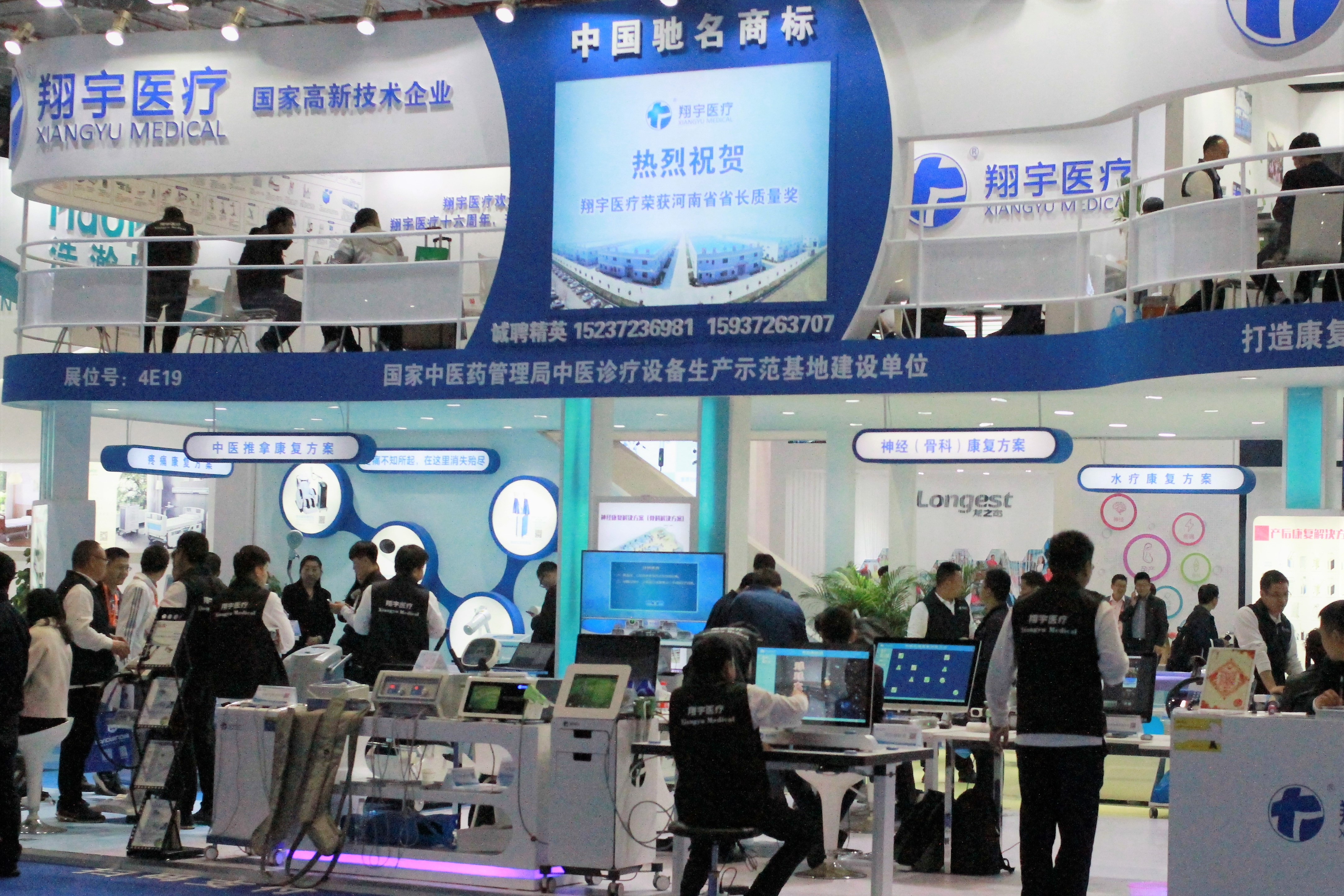 One of the individually designed stands of a large company. On the second floor there is a lounge for rest and negotiations.
One of the individually designed stands of a large company. On the second floor there is a lounge for rest and negotiations.Security
In my purely non-professional opinion, fire safety standards are observed. From the segments there are several emergency exits to very wide corridors, with illuminated signs pointing to them on the floor. The corridors themselves lead to exits from the building. In the segments themselves throughout the ceiling there is a huge ventilation system.
The law and order at the exhibition is ensured by the people's armed police, whose officers patrol both inside the segments (walking between the stands) and in the corridors. On the first day of the exhibition in the central ring, I even saw a whole platoon of guards with various weapons, including long sticks. But, probably, the most important task that the militia performs at the exhibition is to ensure order at the beginning and end of each day of the exhibition. According to the organizers, the total number of visitors to the exhibition is about 120,000 people, and if during the day they are evenly distributed across different segments and corridors, then at the end of the day everyone rushes to the exit. To prevent a crush, improvised corridors of steel gratings are used. The whole crowd moves along them in the form of a snake, as a result of which the path, which takes 5 minutes straight, stretches to one hour. However, such measures completely prevent crowding and are used in China, in addition to exhibitions, at other events and in crowded places.
 The queue at the subway at the end of the first day of the exhibition
The queue at the subway at the end of the first day of the exhibitionVisit
Visiting the exhibition begins with the preparation. Skipping the standard questions of booking tickets and hotels, I will say only that there is a hotel in the exhibition center itself, however, the cost of the rooms is quite high, and they should be booked in about six months. In the vicinity of the center there are a small number of hostels and hotels, but prices are higher than in the city center, because Nearby is also the airport.
On the exhibition website there was the possibility of pre-registration, and I strongly recommend using it, because on the first day of the exhibition, only those who have been pre-registered up to a certain date are allowed to enter. I passed it at the end of March, and on April 6 I received a letter in which it was reported that due to the large number of people willing to attend the exhibition, on April 11 (the first day of the exhibition) only those who had pre-registered before April 4 will have access. Coupled with the fact that on the last day of the exhibition after 11 o'clock most of the companies begin to turn off their stands, the exhibition will be virtually two days without registration. I suppose at many large exhibitions there can be a similar situation.
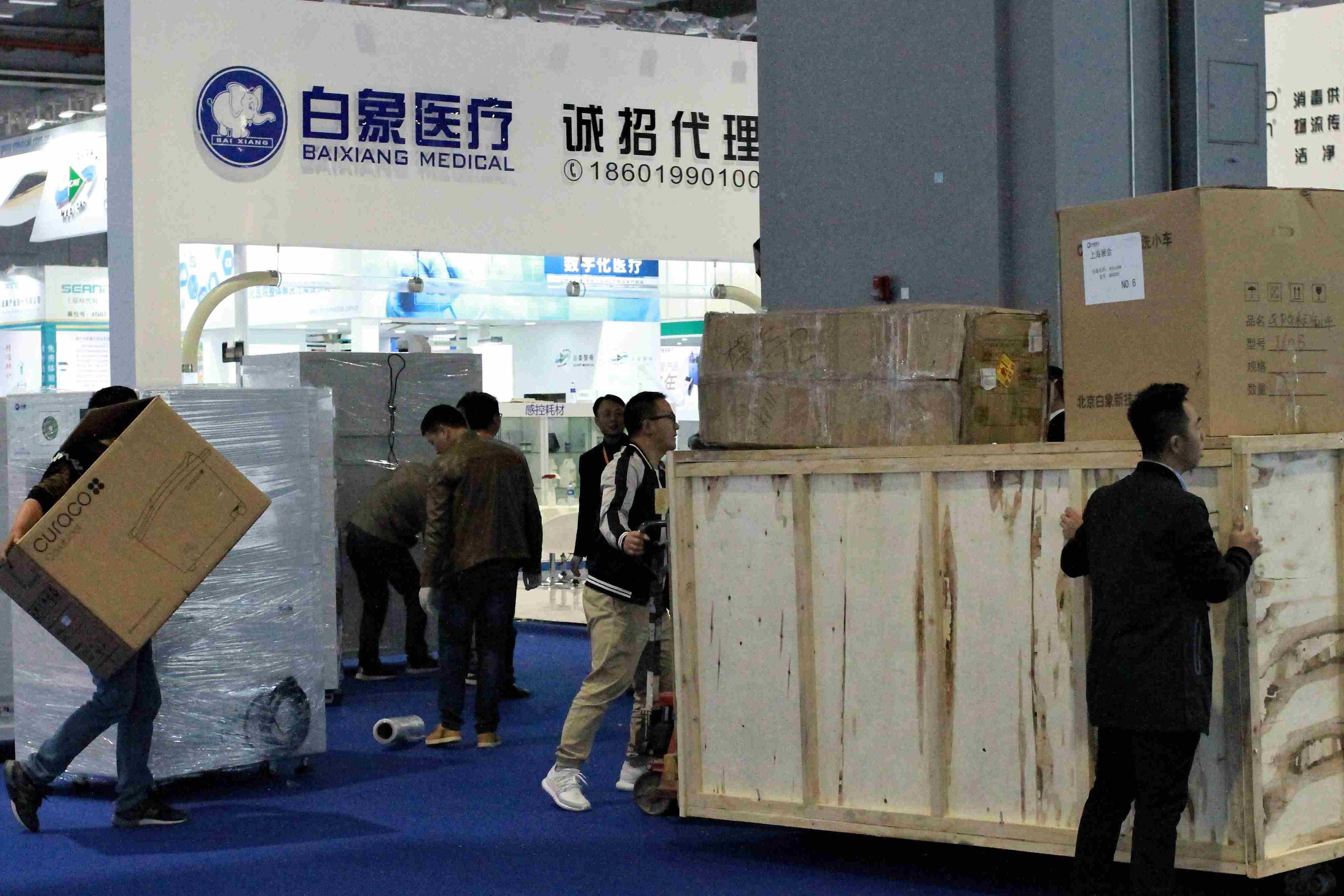 On the last day of the exhibition at noon, some places looked like this
On the last day of the exhibition at noon, some places looked like thisIn order to make the most efficient use of the 4 days of attendance, I reviewed each company for about a week, and made up a “short list” of stands I planned to visit. In the end, out of 4,200 firms, I identified 250 that fit the topics that interest me. Since The list still turned out to be quite large, each company was given priority from 1 to 5. Looking ahead, I’m saying that I was able to see about 150 companies (most of them with a priority of 1-3), of which about half were really interesting. You can do without preparation, because, as mentioned above, the stands are grouped by subject, however, firstly, individual companies can “fly out” from the group, and for various reasons be in other segments. Secondly, preliminary sampling allows us to estimate the number of stands of interest, and, as a result, plan a visit.
All information about the exhibition is available on the website. In the building at the entrance there are brochures and information stands. In addition, there are “information points” in various parts of the exhibition center, in which volunteers help to solve various issues and problems. When I turned to one of such points with a question on currency exchange, one of the employees took me to the bank where this operation could be performed and made sure that my request was fully satisfied.
 One of the information points with volunteers
One of the information points with volunteersCommunication with company representatives is conducted in English (if you do not know Chinese, of course). Usually, among several employees at the stand, one is a manager for working with foreign clients and is fluent in English. Of all the companies I reviewed, only 3-4 had no employees speaking English. With information materials, everything is somewhat worse. Only half of the companies have brochures or catalogs in English, and even then, mostly in a rather abbreviated form. However, most companies have either electronic versions of the catalogs, which can be sent by mail, or product information in English is available on the website. In the process of communication, you can find out the various general and technical aspects related to the product. Cost, batch sizes, delivery, etc. Sometimes you can get an invitation to visit the production company. If we talk about cooperation with Russia, then very few companies have distributors in the Russian Federation, and there are even fewer official representative offices. Therefore, most companies will have to work directly. With this there are difficulties associated primarily with customs clearance, but this topic is a separate article. I would also like to note that during the visit you can collect various waste paper for several kilograms, and companies that provide carrying bags (with company logo) save you. Very comfortably.
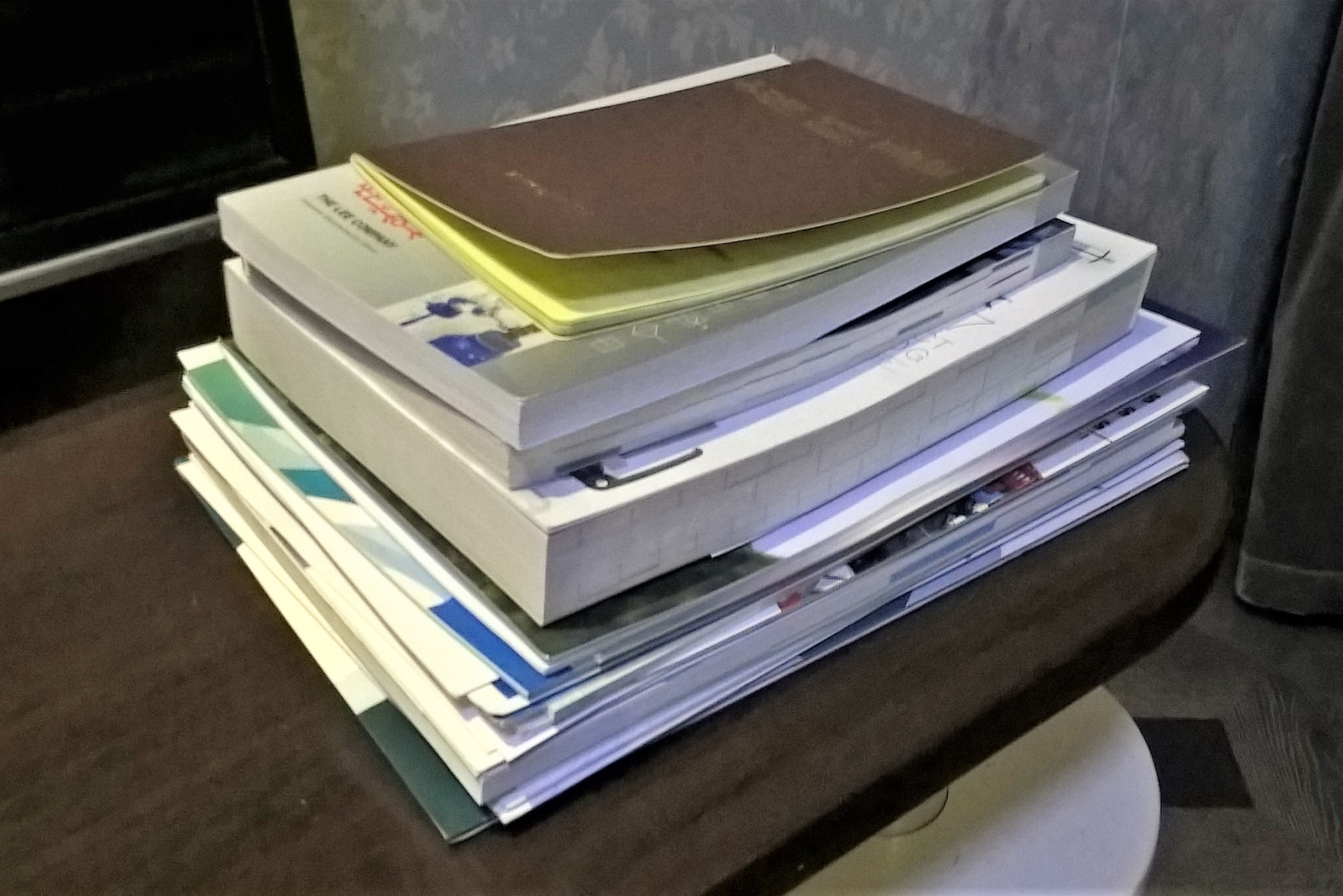 A stack of catalogs and brochures after the first day of the exhibition
A stack of catalogs and brochures after the first day of the exhibitionCity
Despite the enormous size of Shanghai (24 million people), being in this city was comfortable. If you remove some Chinese flavor, then in many aspects it resembles Moscow and even St. Petersburg.
Metro and buses make up the public transport of the city. For foreigners best metro. It is rather large, relatively cheap, there is free wi-fi and all information is duplicated audiovisually in English. With the exception of my trip from the airport, all the other movements around the city I made on the subway. The only drawback, in my opinion, is the early closure - a little after 22 hours.
Shanghai for foreign tourists is a safe city. Of course, the purse must be monitored, but serious crimes are rarely committed. During my short visit I did not see a single hint of any incident. The only thing, and this is relevant for all of China, you need to carefully cross the road. Drivers break the rules, including driving on red. If shot down, then try to finish, so you need to be very careful.
Food in the city is the most diverse. Small street trays with national food, fast foods like KFC and Mcdonald's, large restaurants of various cuisines and price levels. I, for the most part, ate street food, and almost everything seemed to me very tasty, especially the wonton with the Shanghai crab. Lunch was cheaper than in St. Petersburg and Moscow. In the exhibition building, by the way, there was no classic street food, basically various sets were sold, as on airplanes, and prices were slightly higher. Food prices in stores, which is interesting, is higher than in Russian supermarkets.
 One of the points of street food. In the presence of various fish, seafood, meat, chicken, sparrows, pigeons. The price of one skewer 2-4 yuan
One of the points of street food. In the presence of various fish, seafood, meat, chicken, sparrows, pigeons. The price of one skewer 2-4 yuanThe Internet was the most problematic part. First, many foreign Internet resources are blocked in China. Without VPN, google, Microsoft services, almost any instant messengers will not work. Although there were oddities, and once in the subway I managed to make an audio call on WhatsApp. Secondly, despite the fact that in Shanghai in many places there are public wi-fi points, in most cases, a Chinese SIM card is required for authorization. I did not buy a local SIM card, and I only had internet at the hotel and the subway. I advise you still take the Chinese sim card. The connection speed in all places also leaves much to be desired.
With currency exchange is not all easy. It is best to have dollars. Round-the-clock exchange points are at airports, but there is a fixed commission of 45 yuan, and they are located at the edges of the city. According to information on various websites, in Shanghai, currency exchange can be carried out in large hotels and banks. However, when I tried to exchange currency in Bank of China and HSBC, I received the same answers that cash cannot be exchanged. I did not reach a large hotel, and the situation was resolved thanks to a volunteer at the exhibition, who brought me to the bank inside the building itself, where I exchanged cash dollars for yuan in an ATM for just 2 minutes.
Shanghai is a tourist city, therefore, given the time available, it will not be difficult to find an interesting place to visit. I had free time only in the evenings, so I tried to select the appropriate attractions. From mandatory, in my opinion, you need to walk along the Nanjing pedestrian street (analogue of Arbat) to the embankment, which offers views of the new district with skyscrapers (Pearl of the East, Financial Center, Shanghai Tower), and then climb to the top of one of the skyscrapers (for example Shanghai Tower, the second tallest skyscraper in the world with the highest observation deck).
Finally
Visiting such an industry exhibition can be a useful and invaluable experience for any interested specialist. With knowledge of English and preliminary preparation, you can get a lot of information on the exhibition itself and be comfortable in the city. And still feel the very "socialism with Chinese characteristics."
